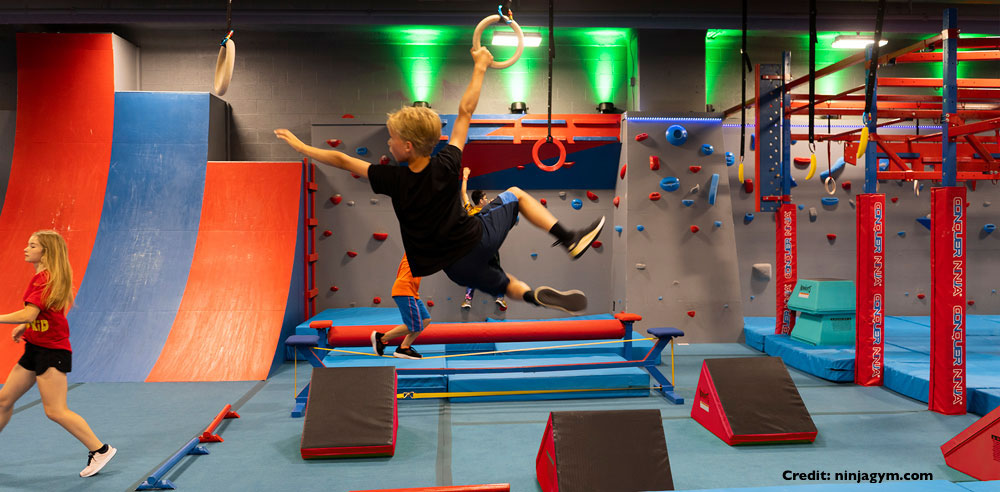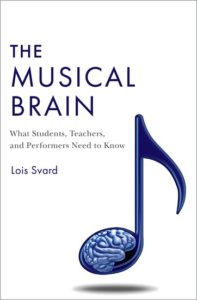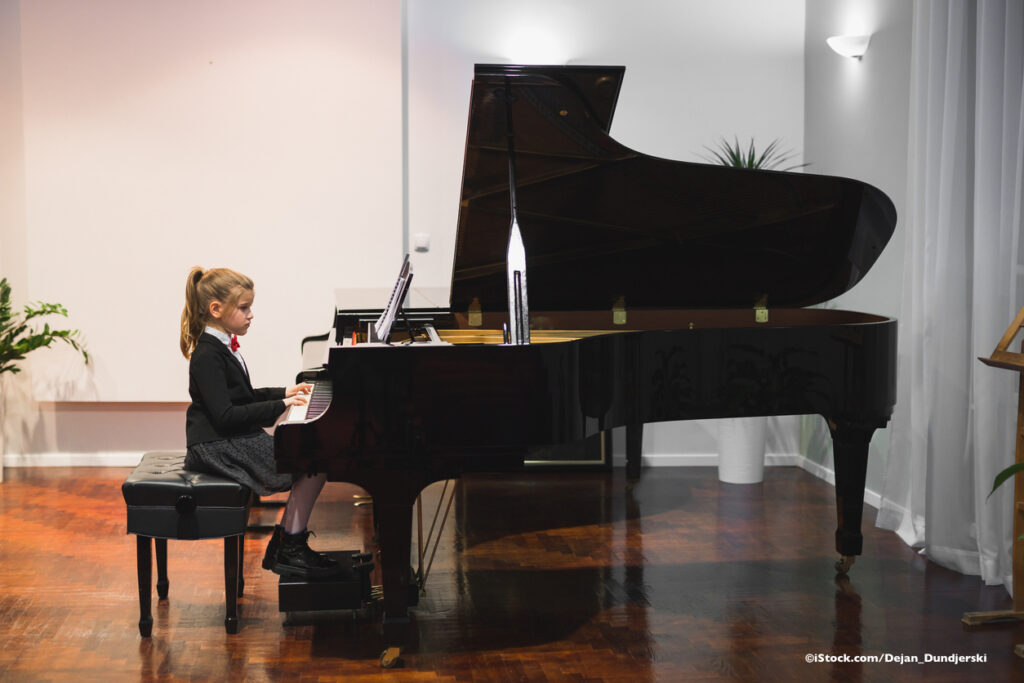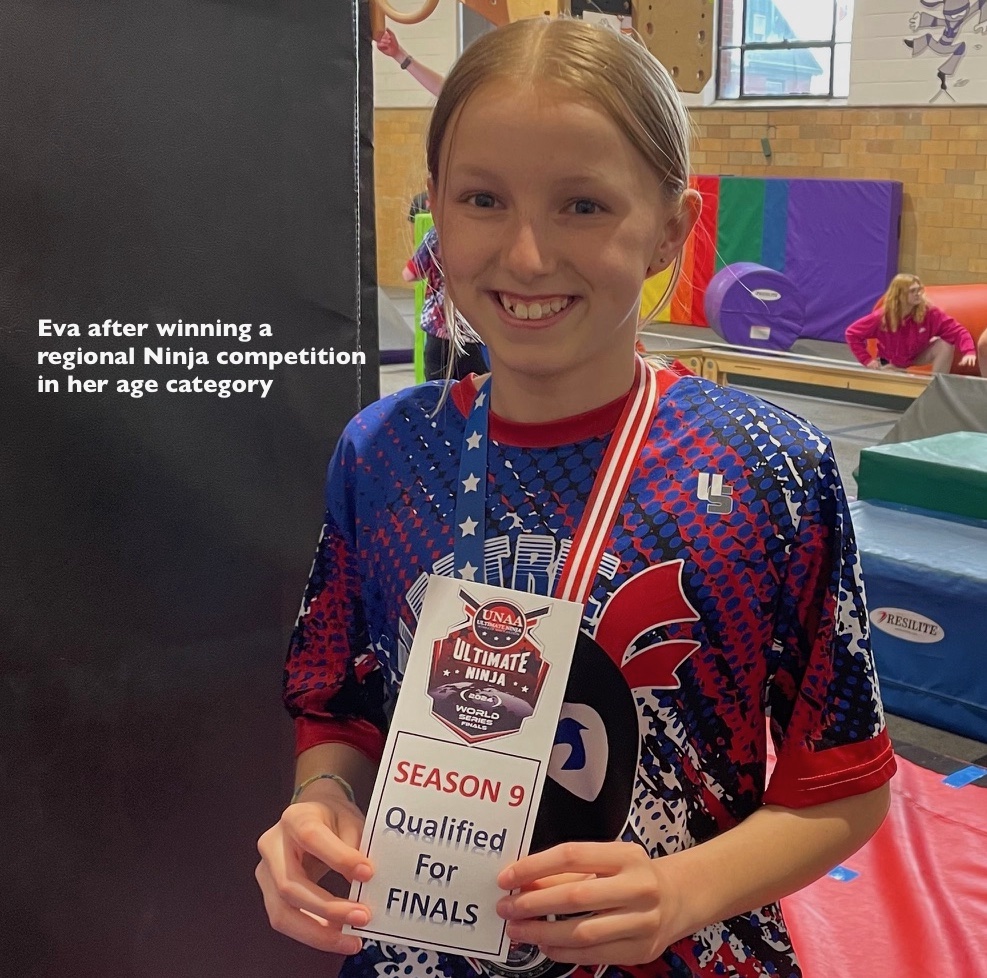Ninjas and musicians don’t seem to have much in common, although they both spend a lot of time practicing. But I began to think about the differences in performance in the two disciplines after I was introduced to the sport by my 12-year-old niece, Eva Fornwalt, who has been practicing ninja for the past couple of years. Eva also studies the violin and plays in her middle school orchestra, so she has experience in both worlds.
While watching Eva in a ninja competition earlier this summer, I was struck by the level of verbal support shown by other competitors and their parents for every child who was competing. Apparently this is not unique to this particular gym, but is common in ninja training programs.
You may be familiar (I wasn’t) with American Ninja Warrior, a sports reality show that has been on network television for several years. Contestants compete to conquer a series of extremely difficult obstacles in the fastest time. Over the past few years, gyms have opened throughout the country that provide ninja training for children as young as three and into the teen years.
The classes are really fitness classes, using ninja training equipment such as rings, cargo nets, warped walls, slack lines, ropes, quintuple steps, and ladders. The purpose is to help children improve strength, balance, and coordination, but also to improve motor planning and problem solving because it sometimes takes split-second critical thinking and decision making to decide how to get from one obstacle to the next.

There are individual classes which involve stretching, conditioning, and working on certain obstacles. They are primarily for people who just want to do ninja for fun. A student is invited to tryout for the team classes, which involve a much harder workout. The team classes also work on how to compete, on learning practice techniques for going from one obstacle to the next, or practicing finding shortcuts or an easier way to complete an obstacle. There are frequent competitions for the teams – local, regional, and eventually national.
A new course, or series of obstacles, is created for each competition. Some of the various obstacles that students have trained on are arranged in a course unique to that competition. Sometimes the competitors are sent a video of the course the previous night, but sometimes the first time they see the course is when they arrive for the competition. A judge walks them through the course prior to the competition, but the students are not allowed to practice on the course. But now comes the part I find interesting.
During the competition, the coach walks along as the student contestant goes through the obstacles, giving encouragement and hints along the way, such as “remember to jump far,” “remember to breathe,” or “take your time.” If your own coach isn’t available for some reason, another coach will step in. And as each contestant goes through the course, all parents, as well as other students, call out encouragement – “Go, Eva!” “You can do it.” “You’ve got this one.” My niece says that she is aware of the crowd support and it not only makes her feel good, it gives her confidence.

I’ve written extensively about neuroplasticity in my book, The Musical Brain: what students, teachers, and performers need to know. As we learn or perfect a new motor skill, such as playing the violin or navigating ninja obstacles, brain neurons form networks connecting all the brain areas that we need for that particular motor skill. When playing a musical instrument and making music, auditory areas are also a necessary part of the brain network.
As we practice these skills over time, the neural connections become stronger and faster, more brain neurons are recruited, and our skill improves. Our brain changes, and this ability to change is called neuroplasticity. The motor skill becomes part of long-term memory. When learning a musical instrument, ninja skills, or any other motor skill, some practice strategies are better than others for creating strong neural wiring in the brain, and I talk about those strategies in the book.
But it’s not just motor areas of the brain in ninja or motor and auditory in music that are part of the neural network. Our emotions are also involved. An area of the brain called the amygdala is important in consolidating memories that have strong emotions, whether that emotion is positive or negative. If we play well in a recital or do well on the ninja course, it makes us feel good, and the positive emotions become an important part of the memory for performing or competing. It makes us more likely to want to perform or compete in the future and to have less anxiety about doing so.
The opposite is also true. If we have what we think is a bad performance experience or are unable to complete some of the obstacles in a ninja competition, we may have very negative emotions about the experience and those negative emotions also become part of our memory for performing or competing. We are likely to be more anxious about doing it again – perhaps developing performance anxiety.
The constant encouragement that the ninja students receive from coaches, parents, and other students as they are going through the competition course – even if they are unable to complete an obstacle – makes them feel positive about themselves. The positive emotions become wired into the memory of competing. The ninja students gain confidence. They know that, even if they can’t complete one obstacle, it’s OK and they will receive encouragement to tackle the next one.
Performances of young music students are a much more solitary experience. Most students have individual music lessons, although increasing numbers of teachers have at least some group classes. Recitals aren’t frequent, they are usually held once or twice a year. For some students, this may be the only time in the year when they perform in front of parents and other students whom they may not necessarily know, unless they have had group lessons or classes.
The student walks to the piano or walks out with her violin, plays the piece in silence, and walks off the stage or platform while the audience applauds. If the young musician feels she played really well, positive emotions become a part of the memory for performing. But if a student feels he/she didn’t play well, he sits and deals with his own negative emotions until the end of the recital when parents may try to console him. Other parents and students often don’t know what to say, so they say nothing. Negative emotions become part of the memory of performing.

A lot of musicians, professionals as well as students, experience performance anxiety. For some, it becomes so debilitating that they give up playing an instrument. The roots of that anxiety often lie in childhood performing experiences. Something may have gone wrong once, but those negative emotions become part of the memory for performing. Because the student is nervous about performing the next time, it again may not go well, and the negative emotions are reinforced.
Now let’s do a thought experiment. Substitute a young pianist or violinist for the ninja competitor. What might happen to the confidence level of young musicians – and to their brain wiring – if, during their first few performing experiences, the teacher (coach) sat beside them and said things like “take your time,” “you’ve got it,” or “remember to breathe.” Imagine if adults and other students in the audience called out “that’s great!” “keep going,” “you can do it” while the student was playing. The young musician would feel the support of the audience and would wire positive emotions into the memory for performance. You may say – “we can’t do that. They would lose their concentration.” But the ninjas don’t lose their focus as people shout encouragement – they just continue to go from one obstacle to the next – all while feeling the support of the audience.
I once had a very musical student who often lost her concentration during performance and would then have memory problems. So during a few piano classes, the other students would do something that might cause her to lose concentration, such as arranging for a cell phone to ring, dropping something, slamming a door, even turning out the lights in the recital hall on one occasion. Shannon was able to internalize the supportive actions of the other students in helping her to address her focus problems, adding positive emotions to her memory of performing. She learned to focus, and she became a more confident performer.
As my niece Eva reported, the encouragement from the ninja audience makes her feel confident and it would do the same thing for young musicians. (Eva has performed in piano and violin recitals and she thinks real-time feedback would be great!) Maybe after a few performances in which the audience calls out encouragement, the young musician would internalize that support, and would feel more confident even when she is a bit older and the audiences are silent. Those early experiences, whether positive or negative, whether demonstrating audience support or not, become part of the memory for performance.
For a number of years, I taught an interdisciplinary course on the creative process. Students were required to go to or participate in a number of experiences that were outside their comfort zone. One senior, who had never been in our university’s performing arts center, went to an orchestra concert that was on the Performing Arts Series. He had never been to an orchestra concert before and he loved it. But he was mystified by the fact that, unlike jazz or rock concerts, everyone sat very quietly until the end of each work. And he wondered why they couldn’t shout and clap in the middle when they liked it.
Well, we know why that’s the case. We have all learned to be silent during the performance of classical music – with good reason. It shows respect for the performers and the music, and allows others to hear well. On the other hand, how are young students going to form positive memories of performing if they aren’t receiving encouraging feedback in real time – the kind of feedback that lets them know that everything is OK – even if they mess up. You may know that your own parents support you, but what if other parents and students felt free to voice their support as well – during the performance – just as they do in ninja competitions? I don’t know what that would look (or sound) like, but I’m interested in hearing your thoughts. Maybe some of you already do something similar in class settings.
Since it has been a while since I posted, just a reminder that if you are OK with your comments being made public, please respond below. If you want them to be private, use the Contact link at the top of the page.





5 responses to “Musicians, Ninjas, and Neuroplasticity”
I think you have something important here that would make our world as well as musicians and those who encourage them better!!!
I really enjoyed reading the comparisons you made here. I picked up climbing (bouldering) and restarted learning classical piano as an adult a few years ago and have found both pursuits to be immensely rewarding. The climbing and ninja culture seem to be quite similar in how openly supportive the community is. On the other hand, when I try to suggest to friends who learned piano in their youth to pick it up again, the main point of resistance is their recollection of stressful recitals/competitions and pushy teachers… So sad!!
I also +1 your point about resilience training for recital performances… I had a very disappointing recital soon after I restarted as an adult and almost quit piano again, but somehow ended up redirecting that frustration into creating a group of music friends who would get together socially and for performance practice. At the next recital, I found myself chuckling to myself – instead of freezing up – when there were distractions by recalling how my friends had dropped water bottles / shut doors and other similar “attention obstacles” during our gatherings – that you’d described above. It really works!
Hi Judy, It’s wonderful to have someone respond with a personal example illustrating what I was trying to say. Thanks for sharing!
Very interesting Lois and an argument to have more group music lessons and making music FUN! Thanks.
Hi Joan, Great to hear from you. Thanks!